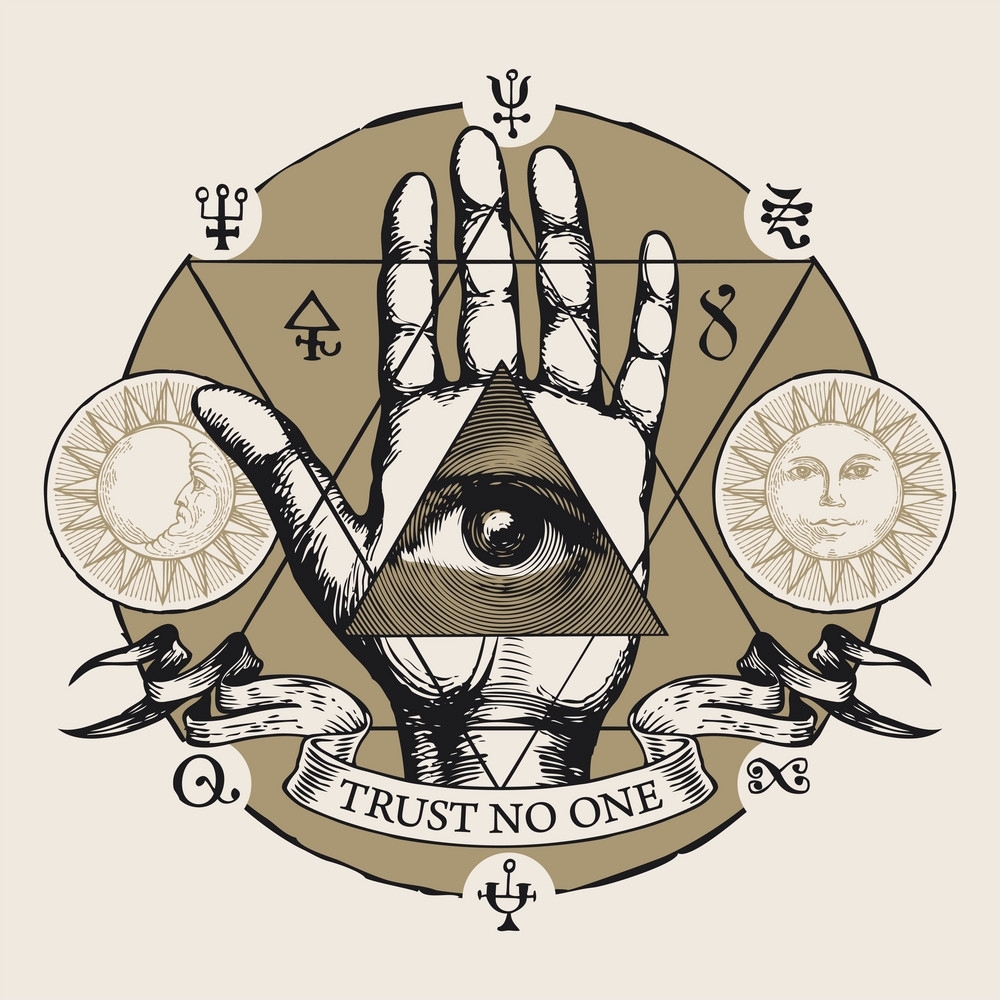Mesopotamia, approximately the area of modern Iraq and northeast Syria, was the home of many ancient cultures – namely the Sumerians, the Akkadians, the Assyrians, the Babylonians, and the Chaldean people – between 4,000 BC and 10th-century AD.
In these societies, polytheism was dominant. However, a specific brand of polytheism reigned supreme – henotheism, which is the belief that certain gods are superior to others. This superiority complex came from a system of deity patronship, in which one city (or city-state) declared a deity its patron and focused its worship on them in particular. The god Enki, for example, was associated with the city of Eridu, and Marduk with Babylon. In the Sumerian language, the gods were called dingir; in the Akkadian language, they were called ilu. There is a long and documented synchronicity between the Sumerians and the Akkadians; their prolonged trade and contact coincided with a diasporia of religious ideas.
The deities of ancient Mesopotamia were highly anthropomorphic – they ingested food and water, became inebriated when consuming alcohol, and could be slayed. They married, interbred, and warred. They were said to be wreathed in terrifying brightness, called melammu, inspiring immediate awe and reverence.
Although no record of the Mesopotamian creation myth exists, anthropologists have pieced together the closest account they can manage from surviving records. In the Epic of Creation, dated to 1200 BC, the Babylonian god Marduk slayed the Dragon-Mother of Chaos Tiamat and used half of her body to create the earth, and the “black-headed people” living on it, and the other half to create paradise, šamû, and the netherworld, irṣitu.
Although ancient Mesopotamian modes of worship were eventually dispersed by the expansion of monotheism (and later, Christianity), many of their myths and legends formed the basis of accounts founds in the Old Testament, The Qur’an, and other Biblical texts still referenced today. They are also the point of origin of many demonic aspects revered by spiritual Satanists.
For example:
Marduk – Likely pronounced Marutuk, Marduk was the patron deity of the city of Babylon when it became the political epicenter of the Euphrates valley in the 18th century BC, during the reign of Hammurabi. The Enûma Eliš, dated as early as the seventh century BC after its discovery in 1849, details the triumph of Marduk over Tiamat:
“The epic names two primeval gods: Apsû (or Abzu) who represents fresh water, and Tiamat representing oceanic waters. Several other gods are created (Ea and his brothers) who reside in Tiamat’s vast body. They make so much noise that the babel or noise annoys Tiamat and Apsû greatly. Apsû wishes to kill the young gods, but Tiamat disagrees. The vizier, Mummu, agrees with Apsû’s plan to destroy them. Tiamat, in order to stop this from occurring, warns Ea (Nudimmud), the most powerful of the gods. Ea uses magic to put Apsû into a coma, then kills him, and shuts Mummu out. Ea then becomes the chief god, and along with his consort Damkina, has a son, Marduk, greater still than himself. Marduk is given wind to play with and he uses the wind to make dust storms and tornadoes. This disrupts Tiamat’s great body and causes the gods still residing inside her to be unable to sleep.
They persuade Tiamat to take revenge for the death of her husband, Apsû. Her power grows, and some of the gods join her. She creates 11 monsters (Bašmu, Ušumgallu, Mušmaḫḫū, Ugallu, Umū dabrūtu, Kulullû, Kusarikku, Scorpion man, ?, ?, ?) to help her win the battle and elevates Kingu, her new husband, to “supreme dominion.” A lengthy description of the other gods’ inability to deal with the threat follows. Marduk offers to save the gods if he is appointed as their leader and allowed to remain so even after the threat passes. When the gods agree to Marduk’s conditions he is selected as their champion against Tiamat, and becomes very powerful. Marduk challenges Tiamat to combat and destroys her. He then rips her corpse into two halves with which he fashions the earth and the skies. Marduk then creates the calendar, organizes the planets and stars, and regulates the moon, the sun, and weather.
The gods who have pledged their allegiance to Tiamat are initially forced into labor in the service of the gods who sided with Marduk. But they are freed from these labors when Marduk then destroys Tiamat’s husband, Kingu and uses his blood to create humankind to do the work for the gods. Most noteworthy is Marduk’s symbolic elevation over Enlil, who was seen by earlier Mesopotamian civilizations as the king of the gods.” – Wikipedia
Ninhursag – Typically depicted as a beautiful woman dressed in a horned headdress, a tiered skirt, and carrying a mace or baton, Ninhursag is a mountain goddess, a fertility goddess, and consort of Marduk. She was frequently depicted surrounded by eight-pointed stars and accompanied by a lion cub on a leash. Her other names are Sarpanit, Zerbanitu, Erua, Belet-Ili, Ama-arhus, Innana, Astarte, Ishtar, Ninmah, or Naamah. She was the personification of the planet Venus, the “morning star.”
Na’amah (in Hebrew: נעמה) is referred to in the Zohar, which was first published in Spain in the 13th century by Moses de Leon. De Leon claimed the work was written originally by Shimon bar Yochai, a rabbi who lived during the 2nd century in the height of Roman persecution. According to legend, he hid in a cave for thirteen years studying the Torah, and was inspired by the Prophet Elijah to write the Zohar. This is consistent with the style of Aramaic in which it was written, which was the day-to-day language of Israel during the Second Temple period (539 BC – 70 AD).
“She, along with Lilith, causes epilepsy in children. According to Zohar she is a succubus and fallen angel, and is generally regarded as an aspect or relation of Lilith. After Cain killed Abel, Adam separated from Eve for 130 years. During this time, two female spirits, Lilith and Naamah would visit Adam and bear his children, who became the Plagues of Mankind. (Zohar 3:76b-77a)” – Wikipedia
The Utukku – In Sumerian, spiritual entities that could be good or evil were called Udug; in Akkadian, they were called Utukku. Evil utukku were called edimmu or ekimmu; good utukku were called shedu. In Akkadian mythology, the ekimmu were in the service of the underworld, tasked with retrieving souls and offerings left on altars by adherents. Their favorite offerings were the blood, liver, and “sweetmeats” of sacrificial animals.
Another word for spirit in Akkadian is lilu; the male variant is lili, and the female lilitu. The vardat lilitu, or “maiden spirit,” bears some resemblance to the Talmudic legend of Lilith. Early Jewish magical incantation bowls from Babylon, dated to the 4th and 6th century AD, refer to Bagdana as “king of the lilits.” Local folklore at the time dictated that the bowls were to be buried upside down beneath houses to trap the demon. One such bowl, commissioned from a Jewish occultist, was intended to protect a woman named Rashnoi and her husband from Lilith:
“Thou liliths, male lili and female lilith, hag and ghool, I adjure you by the Strong One of Abraham, by the Rock of Isaac, by the Shaddai of Jacob, by Yah Ha-Shem by Yah his memorial, to turn away from this Rashnoi b. M. and from Geyonai b. M. her husband. [Here is] your divorce and writ and letter of separation, sent through holy angels. Amen, Amen, Selah, Halleluyah!” — Excerpt from translation in Aramaic Incantation Texts from Nippur, James Alan Montgomery, p156


